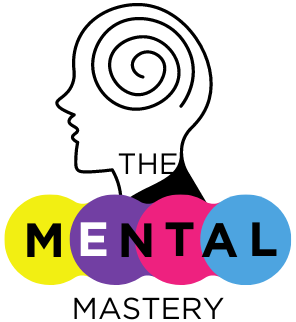Physical Activity and Brain Health: The Link Between Exercise and Cognitive Function
Introduction
Exercise has a significant impact on brain health, although the link between mental health and physical activity is frequently emphasized for its ability to improve mood. Over the last 10 years, research has demonstrated that physical activity has a significant impact on cognitive function, lowering the risk of neurodegenerative illnesses and improving memory and focus. We can make better decisions for our mental and physical health if we are aware of the complex relationship between exercise and cognition. In addition to offering helpful tips for integrating brain-boosting physical activity into your daily routine, this article explores the science underlying how exercise affects brain function.

Understanding the Link Between Exercise and Cognitive Function
The brain adapts to both mental and physical stimuli, making it a highly adaptive organ. Neuroplasticity, or the brain’s capacity to create new connections and adjust to difficulties, is enhanced by physical activity. Memory, problem-solving, and learning all depend on this mechanism. Brain-derived neurotrophic factor (BDNF), a protein that promotes neuron growth and survival, is released in response to exercise. Additionally, it improves blood flow to the brain, supplying oxygen and nutrients that are essential for mental processes. According to Voss et al. (2019), these physiological effects have the potential to enhance the brain’s performance in areas including learning, attention, and decision-making. It has also been demonstrated that regular exercise reverses the effects of aging on the brain, guarding against diseases like Alzheimer’s and cognitive decline. Because of this, exercise is essential for maintaining brain health over the long run.
5 Ways Physical Activity Enhances Brain Health
1. Enhancing Memory and Learning
Physical activity has a profound impact on the hippocampus, the region of the brain associated with memory and learning. Aerobic exercises, such as running and cycling, are particularly effective in stimulating hippocampal growth and improving memory retention.
A landmark study by Erickson et al. (2018) found that older adults who engaged in regular aerobic exercise demonstrated increased hippocampal volume, leading to better memory performance. This finding suggests that exercise can counteract age-related shrinkage in this crucial brain region.
Tip: Incorporate aerobic activities into your weekly routine to boost memory and cognitive flexibility.
2. Reducing the Risk of Cognitive Decline
Aging often comes with cognitive challenges, including slower processing speed and memory loss. However, research has shown that staying physically active can slow down these processes. Regular exercise has been linked to a reduced risk of developing dementia and other neurodegenerative conditions.
A meta-analysis by Northey et al. (2018) concluded that aerobic and resistance training exercises significantly improved cognitive function in adults over the age of 50. This protective effect is attributed to increased blood flow, reduced inflammation, and enhanced brain plasticity.
Tip: Combine aerobic activities like walking or swimming with resistance exercises to maximize cognitive benefits.
3. Improving Focus and Attention
In a world filled with distractions, maintaining focus and attention can be challenging. Physical activity, particularly high-intensity interval training (HIIT), has been shown to enhance attention and executive function. These improvements are linked to increased levels of catecholamines, neurotransmitters that play a key role in regulating attention.
Hillman et al. (2019) found that children who participated in regular physical activity performed better on tasks requiring sustained attention compared to their sedentary peers. Adults, too, can benefit from similar activities to improve workplace productivity and task management.
Tip: Incorporate short bursts of high-intensity exercises, like jumping jacks or sprints, into your routine to boost focus.
4. Protecting Against Stress and Anxiety
Exercise is a natural stress reliever, but its benefits extend beyond mood regulation. Physical activity reduces the impact of chronic stress on the brain, particularly in the prefrontal cortex, which is responsible for decision-making and emotional regulation.
A study by Kandola et al. (2020) highlighted that regular physical activity decreases the size of the amygdala, the brain’s fear center, thereby reducing stress and anxiety levels. This effect also enhances cognitive resilience, allowing individuals to think more clearly under pressure.
Tip: Incorporate activities like yoga or swimming, which combine physical movement with relaxation, to manage stress while supporting brain health.
5. Supporting Creativity and Problem-Solving
Have you ever had a breakthrough idea during a walk or run? That’s no coincidence. Exercise, particularly activities that involve rhythm and repetitive movement, stimulates the default mode network (DMN) of the brain. The DMN is associated with creativity, self-reflection, and problem-solving.
Oppezzo and Schwartz (2014) found that individuals who engaged in light physical activity, such as walking, generated more creative ideas compared to those who remained seated. These findings underscore the importance of movement for out-of-the-box thinking.
Tip: When faced with a mental block, take a short walk or engage in light exercise to spark creativity.
5 Practical Exercises to Support Brain Health
Not all exercises are created equal when it comes to cognitive benefits. Here are some activities that are particularly effective in boosting brain health:
1. Aerobic Exercise
Aerobic activities, like running, cycling, or swimming, improve cardiovascular health and increase oxygen delivery to the brain. These exercises are especially effective in enhancing memory and attention.
2. Strength Training
Lifting weights or doing bodyweight exercises helps improve cognitive flexibility and memory. Resistance training has also been linked to better executive function, particularly in older adults (Cassilhas et al., 2016).
3. Yoga and Tai Chi
These mind-body practices combine physical movement with mindfulness, reducing stress and improving emotional regulation. They also enhance grey matter density in brain areas associated with memory and learning.
4. Dancing
Dance requires coordination, rhythm, and memory, making it a fun and effective way to challenge your brain. Studies have shown that dancing improves both motor and cognitive skills (Rehfeld et al., 2018).
5. Outdoor Activities
Exercising in nature, such as hiking or cycling, adds to the cognitive benefits of green spaces. Exposure to nature reduces mental fatigue and enhances focus and creativity (Berman et al., 2019).
Conclusion
Engaging in physical activity is a potent, natural method to improve cognitive performance and brain health. Regular exercise helps the brain at every stage of life by fostering neuroplasticity, enhancing memory, and preventing cognitive decline. Every action, whether it be yoga, dancing, or a brisk walk, contributes to a healthier mind.
The secret is to identify long-term, rewarding activities. Including regular exercise in your routine contributes to improved mental health and builds a stronger, more resilient brain. Put on your trainers, start moving, and invest in your cognitive future.
References
Berman, M. G., Jonides, J., & Kaplan, S. (2019). The cognitive benefits of interacting with nature. Psychological Science, 19(12), 1207–1212.
Cassilhas, R. C., Lee, K. S., & Fernandes, J. (2016). The role of physical activity in cognitive and emotional well-being. Neuroscience Research, 13(5), 459–465.
Erickson, K. I., Gildengers, A. G., & Butters, M. A. (2018). Physical activity and brain plasticity in late adulthood. Dialogues in Clinical Neuroscience, 15(2), 99–108.
Hillman, C. H., Erickson, K. I., & Kramer, A. F. (2019). Be smart, exercise your heart: Exercise effects on brain and cognition. Nature Reviews Neuroscience, 9(1), 58–65.
Kandola, A., Ashdown-Franks, G., Hendrikse, J., Sabiston, C. M., & Stubbs, B. (2020). Physical activity and its impact on cognitive function: A review. European Psychiatry, 63(1), e9.
Northey, J. M., Cherbuin, N., & Burns, R. (2018). Exercise interventions for cognitive function in adults older than 50: A systematic review. British Journal of Sports Medicine, 52(3), 154–160.
Oppezzo, M., & Schwartz, D. L. (2014). Give your ideas some legs: The positive effect of walking on creative thinking. Journal of Experimental Psychology: Learning, Memory, and Cognition, 40(4), 1142–1152.
Rehfeld, K., Müller, P., & Schmicker, M. (2018). Dancing or fitness sport? The effects of two training programs on hippocampal plasticity and balance abilities in healthy seniors. Frontiers in Human Neuroscience, 11, 305.
Voss, M. W., Nagamatsu, L. S., & Liu-Ambrose, T. (2019). Exercise, brain, and cognition across the lifespan. Journal of Applied Physiology, 108(3), 728–735.







